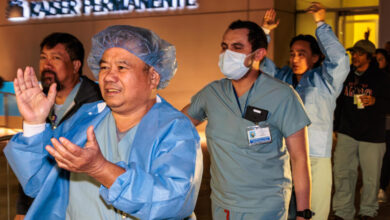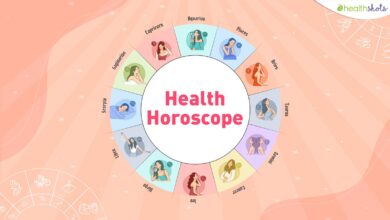
The Mystery of My Burning Esophagus
[ad_1]
It wasn’t until I called Brendan Canning, a professor of medicine at Johns Hopkins, that I found someone willing to speculate how an allergy in the esophagus might lead to the terrifying sensation of drowning. Canning, a self-described “science nerd,” is not a physician but a researcher who focuses on allergies and airways. He explained to me that the nerves that transmit pain, air hunger and other information from our organs lead, like telegraph lines, to very primitive parts of the brain that are physically near one another. Because of this proximity, the neurons receiving signals sometimes have a hard time determining precisely where the message is coming from. It might be that any irritation in the esophagus, whether from an upward surge of acid or inflammation spurred by a food allergy, could be interpreted as originating in the lungs — or even the heart — and a body might respond, as mine apparently did, with the panic of someone who’s drowning. “It’s not surprising that this could happen,” Canning said, given “the tremendous overlap that exists in the brain stem.”
Why has there been no moonshot program to conquer allergic disease? Eosinophilic esophagitis is rare, but allergic diseases as a group include the itchy skin of eczema, the hives and vomiting of food allergies, the runny noses of hay-fever season, the breathing problems of allergic asthma and more. They afflict nearly one in three Americans, making life miserable for vast swaths of the population. And if the microbiome has been implicated for so long in these ailments — and now in EoE — why is it taking so long for a microbiome-targeting therapy to become available? “We’re wondering about that, too,” Alkis Togias, the chief of the Allergy, Asthma and Airway Biology Branch at the National Institute of Allergy and Infectious Diseases, told me. In recent years, the institute has fielded only a few applications for microbiome-related studies, he says — far fewer than anticipated. Scientists aren’t convinced that they have identified the right microbes, he suspects. But Togias says that the agency is taking the allergy problem seriously and that funding for the study of food allergies, for example, has risen to between $60 million and $80 million per year now from $1.3 million in 2003. “It’s a very big jump,” he says. “But I totally agree with you. It should be more.”
Much of the science on the microbiome suggests that what you encounter early in life sets the tone for how your immune system works later, so many in the field understandably focus on prevention, rather than on how to correct an already-dysfunctional community of microbes. But a few researchers have been pursuing the prospect of changing those adult microbiomes as well.
A few years ago, Rima Rachid, the director of the Allergen Immunotherapy Program at Boston Children’s Hospital, and her colleagues gave 10 adult volunteers with peanut allergies microbes from nonallergic donors. The subjects ingested, in capsule form, carefully screened feces from healthy people in order to see if the microbes it contained could give them relief from nut allergies. After four months, three subjects could tolerate at least three times the amount of peanut protein compared with amounts that originally triggered reaction. That translated to a little more than one peanut. Three out of five other patients who, before swallowing the capsules, took antibiotics, presumably clearing out their own distorted microbiomes and making it easier for the new ones to establish themselves, could tolerate more than two peanuts’ worth of protein.
The study was tiny, lacked a control group and was hardly conclusive. (A follow-up study is underway with children.) And EoE doesn’t work exactly like these more common nut allergies. But the research gives people like me, adults with established allergic disease, reason to hope. “I don’t think you can say that once your microbiome is formed, you’ve lost hope,” Rachid told me. “There is a possibility of changing the microbiome.”
[ad_2]
Source link







